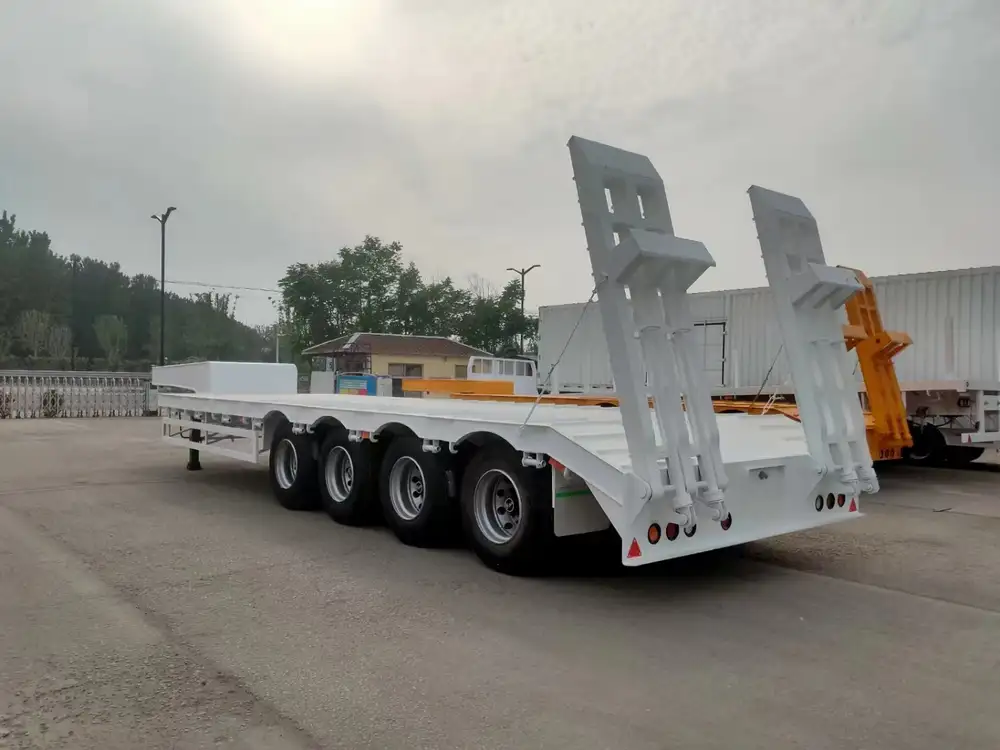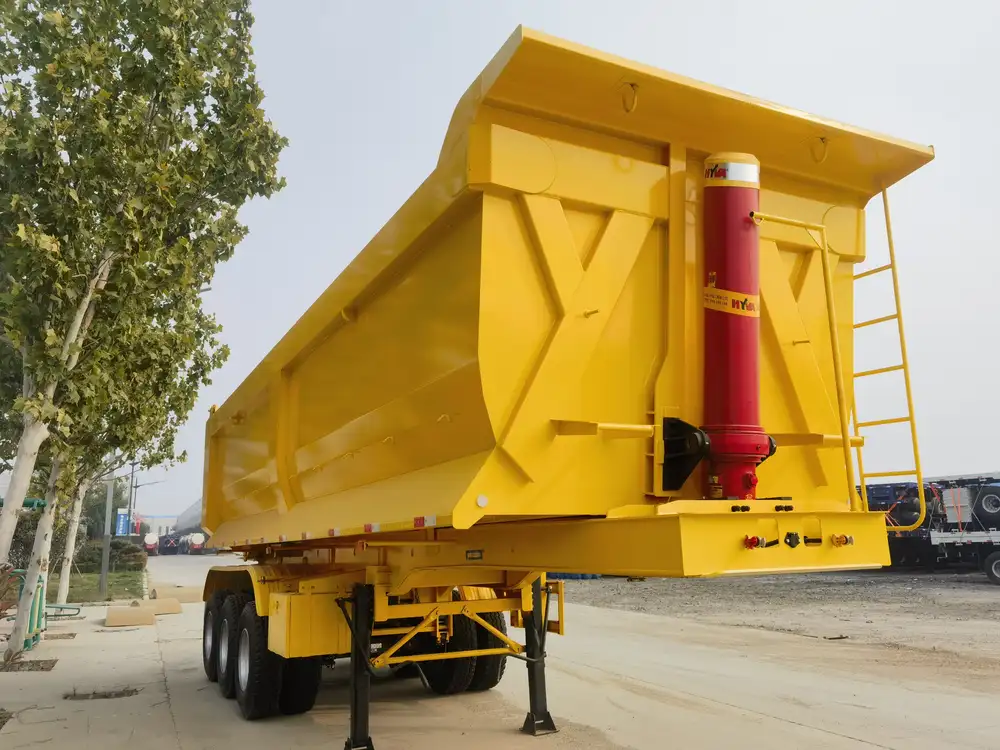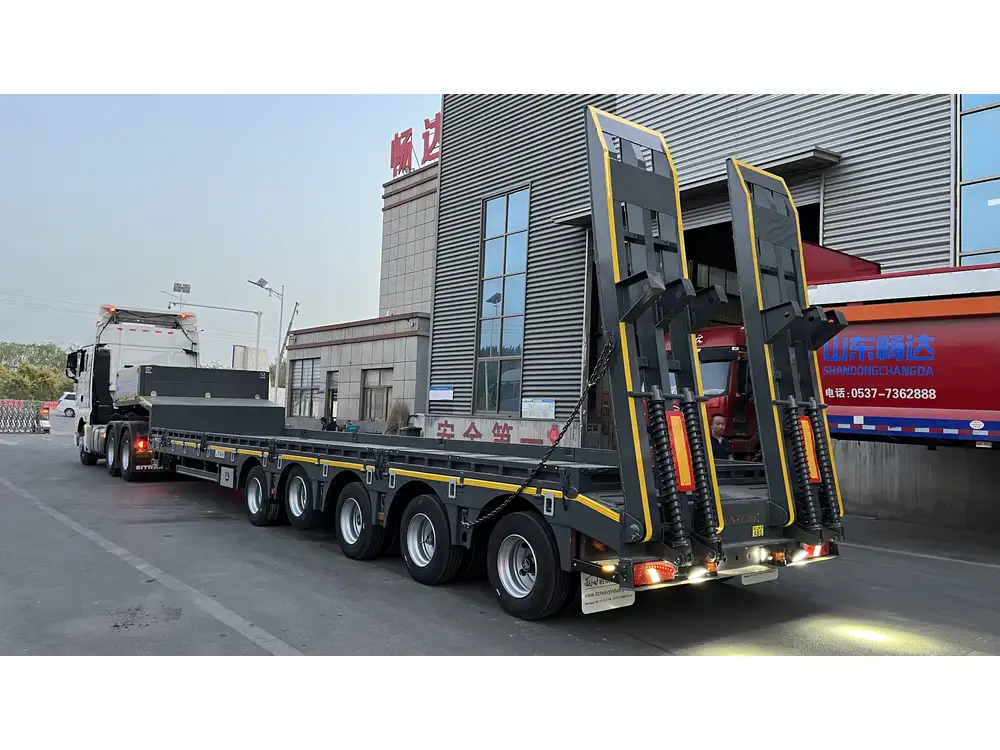When delving into the world of transportation and logistics, understanding the specifications of vehicles like flatbed trailers is crucial. A 48FT flatbed trailer, widely recognized for its versatility and utility in hauling various types of cargo, has specific dimensions and characteristics that are important for manufacturers, trucking companies, and logistics professionals. In this article, we will elaborate on the key dimensions of a 48FT flatbed trailer, as well as its features, usage, and compliance considerations in the transportation industry.
Overview of Flatbed Trailers
Flatbed trailers are a type of semi-trailer that is characterized by its flat deck with no sides or roof. This design allows for easy loading and unloading of cargo, making them an ideal choice for transporting oversized and heavy items, including:
- Construction materials (steel beams, lumber, etc.)
- Heavy machinery
- Vehicles
- Large equipment
- Industrial containers
Dimensions of a 48FT Flatbed Trailer

Standard Width
One of the most commonly asked questions when it comes to flatbed trailers is, “How wide is a 48FT flatbed trailer?” A standard 48FT flatbed trailer typically measures 8.5 feet (102 inches) in width. This measurement complies with the Federal Highway Administration’s (FHWA) regulations for trailer widths, ensuring safe transit on most highways across the United States.
Length
As denoted by its name, the length of a standard 48FT flatbed trailer is 48 feet. This length is optimal for accommodating a variety of loads, ensuring they can haul larger items without exceeding the limits set by regulations.
Height Specifications
The height of a flatbed trailer can vary, but a typical unloaded height ranges from 4.0 to 5.0 feet. When loaded, the height can be considerably greater depending on the cargo. It is essential to consider vertical clearance when planning transport routes, especially in environments with overpasses or bridges.

Regulatory Considerations
When transporting goods, it’s crucial to adhere to federal and state regulations regarding trailer dimensions. For instance, a maximum width of 8.5 feet is allowed, which means that loads exceeding this width often require permits or specialized trailers. Most states outline similar regulations, but it’s advisable to consult local laws to ensure compliance.
Types of 48FT Flatbed Trailers
Flatbed trailers can vary based on their design and functionality. Understanding the different types can help select the most appropriate one for a specific task.
1. Standard Flatbed Trailers
These trailers have a simple design without side panels or a roof. They are ideal for transporting large, heavy cargo that can be loaded from the sides or the rear.

2. Step Deck (Drop Deck) Trailers
These trailers feature a lower deck that provides additional height clearance for tall loads, allowing carriers to transport taller items safely without exceeding height restrictions.
3. Lowboy Trailers
Designed primarily for transporting oversized loads and heavy machinery, lowboy trailers have a very low deck height. This design lowers the center of gravity, which makes them more stable while driving.
4. Removable Gooseneck Trailers
These trailers feature a detachable front, allowing for the transportation of taller loads. The gooseneck can be removed, providing a low height for loading machinery.

Load Capacity and Weight Considerations
Weight Limitations
The weight capacity of a 48FT flatbed trailer typically varies between 48,000 to 50,000 pounds for a standard trailer. However, this capacity can fluctuate based on the trailer’s configuration and if it is designed to carry heavier loads.
How to Calculate Weight Distribution
Correct weight distribution is vital to ensure stability and safety during transport. The following guidelines can assist in calculating weight distribution:
- Even Load Distribution: Cargo should be evenly distributed across the trailer to maintain balance.
- Center of Gravity: Keep the center of gravity as low as possible by placing heavier items lower on the trailer.
- Use of Chains and Straps: Properly securing the load with chains and tie-downs is essential to prevent shifting during transit.

Load Securement Regulations
In compliance with the Federal Motor Carrier Safety Administration (FMCSA), specific guidelines dictate how cargo must be secured. Proper load securement ensures safety for all road users, and failure to adhere to these guidelines can lead to hefty fines and safety hazards.
Choosing the Right Trailer for Your Needs
Selecting the right flatbed trailer involves considering multiple factors. Here’s a succinct comparison to help in decision-making:
| Criteria | Standard Flatbed | Step Deck | Lowboy | Removable Gooseneck |
|---|---|---|---|---|
| Height | Standard | Lower deck | Very Low | Low (with gooseneck removed) |
| Cargo Type | General cargo | Tall loads | Heavy machinery | Oversized machinery |
| Weight Capacity | 48,000-50,000 lbs | Varies | Varies | Varies |
| Ease of Loading | Side & rear | Side & rear | Side | Side (when disconnected) |
| Regulatory Compliance | General | General | Specific | Specialized |
Considerations for Diverse Cargo Types
When transporting different types of cargo, be mindful of the following:
- Loading Technique: Heavy machinery often requires cranes or forklifts for loading and unloading.
- Securement Needs: More oversized and oddly shaped cargo will need additional securement measures.
- Overdimension Permits: If a load exceeds legal limits, ensure you acquire the appropriate permits before transit.

Maintenance and Inspection of Flatbed Trailers
Regular maintenance is vital for ensuring the lifespan and reliability of flatbed trailers. Here are key areas to focus on:
1. Tire Maintenance
Inspect tire pressure, tread wear, and ensure the tires are properly aligned. Maintaining the tires prolongs their lifespan and ensures safe travels.
2. Brake System Checks
Routine checks of the brake system including pads, rotors, and hydraulic lines are vital for safe operation.

3. Structural Integrity
Inspect the trailer’s frame, decking, and cross members for signs of wear or damage. Any structural compromise can lead to severe safety hazards.
4. Load Securement Inspection
Regularly check and maintain ratchet straps, chains, and other load securement devices to avoid cargo shifting and ensure compliance with safety regulations.
Conclusion: Optimizing Your Flatbed Trailer Experience
Choosing and operating a 48FT flatbed trailer efficiently requires a comprehensive understanding of its specifications, weight, and load capacities. By adhering to safety guidelines, recognizing the importance of maintenance, and knowing the types of flatbed trailers suited for various jobs, you can optimize your logistical operations.
Investing in the right trailer for the job, while maintaining it responsibly, is paramount not just for compliance but also for the safety of all road users. As both manufacturers and users of semi-trailers, our commitment to quality and adherence to regulations will define the success of our transport endeavors. Whether you are hauling heavy machinery, construction supplies, or anything in between, understanding what a 48FT flatbed trailer offers will enhance your operational efficiency and safety on the road.



